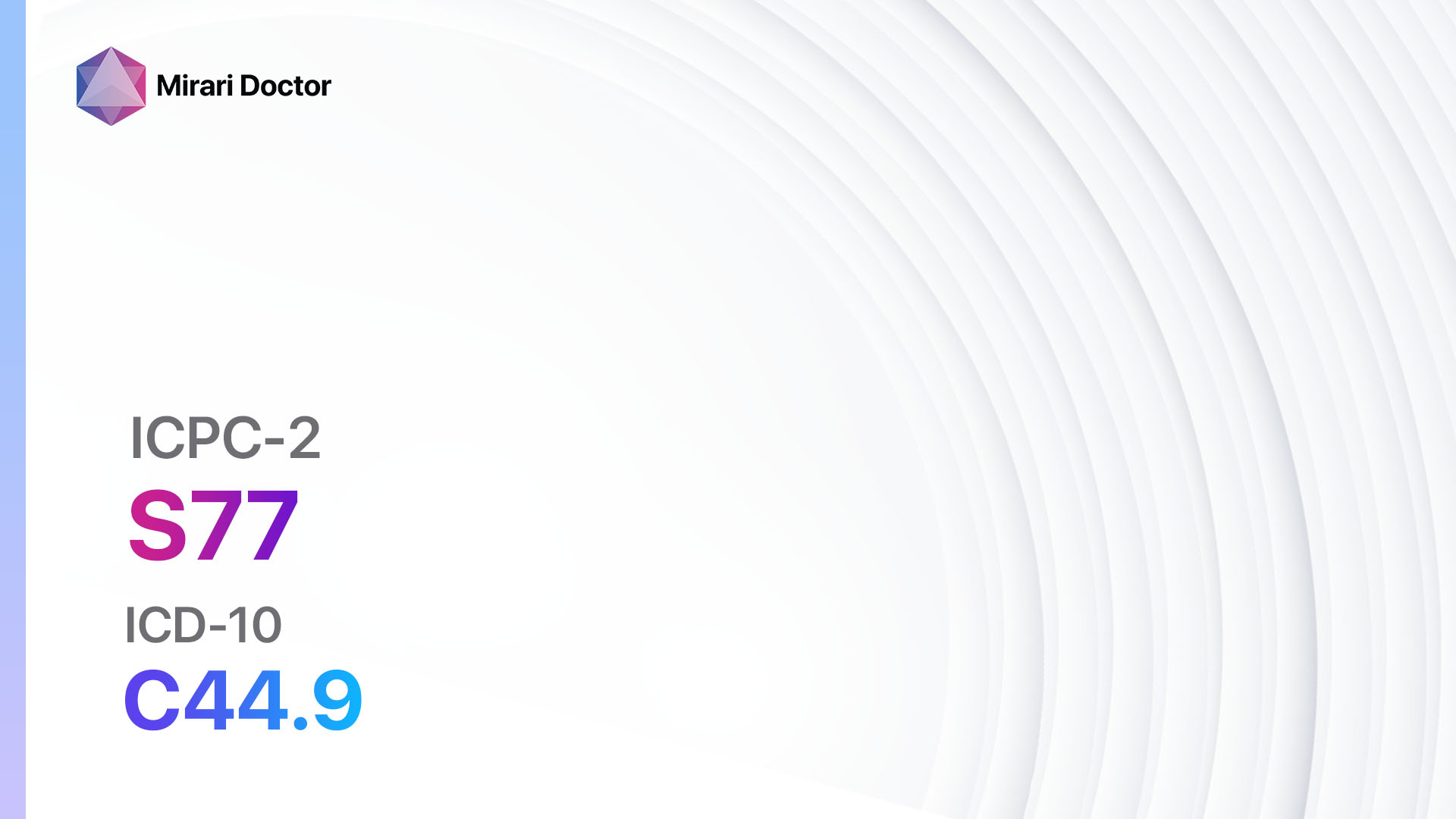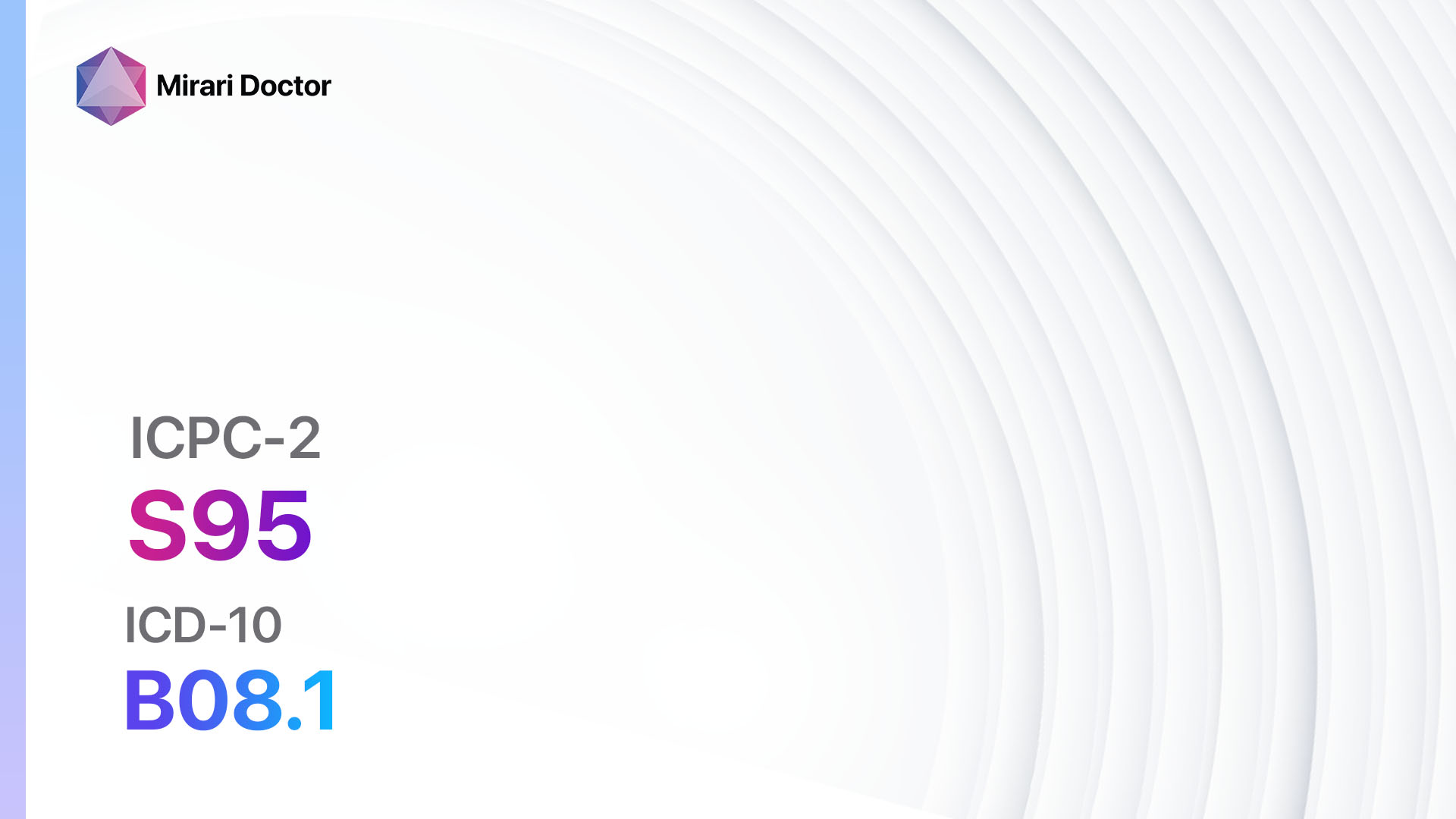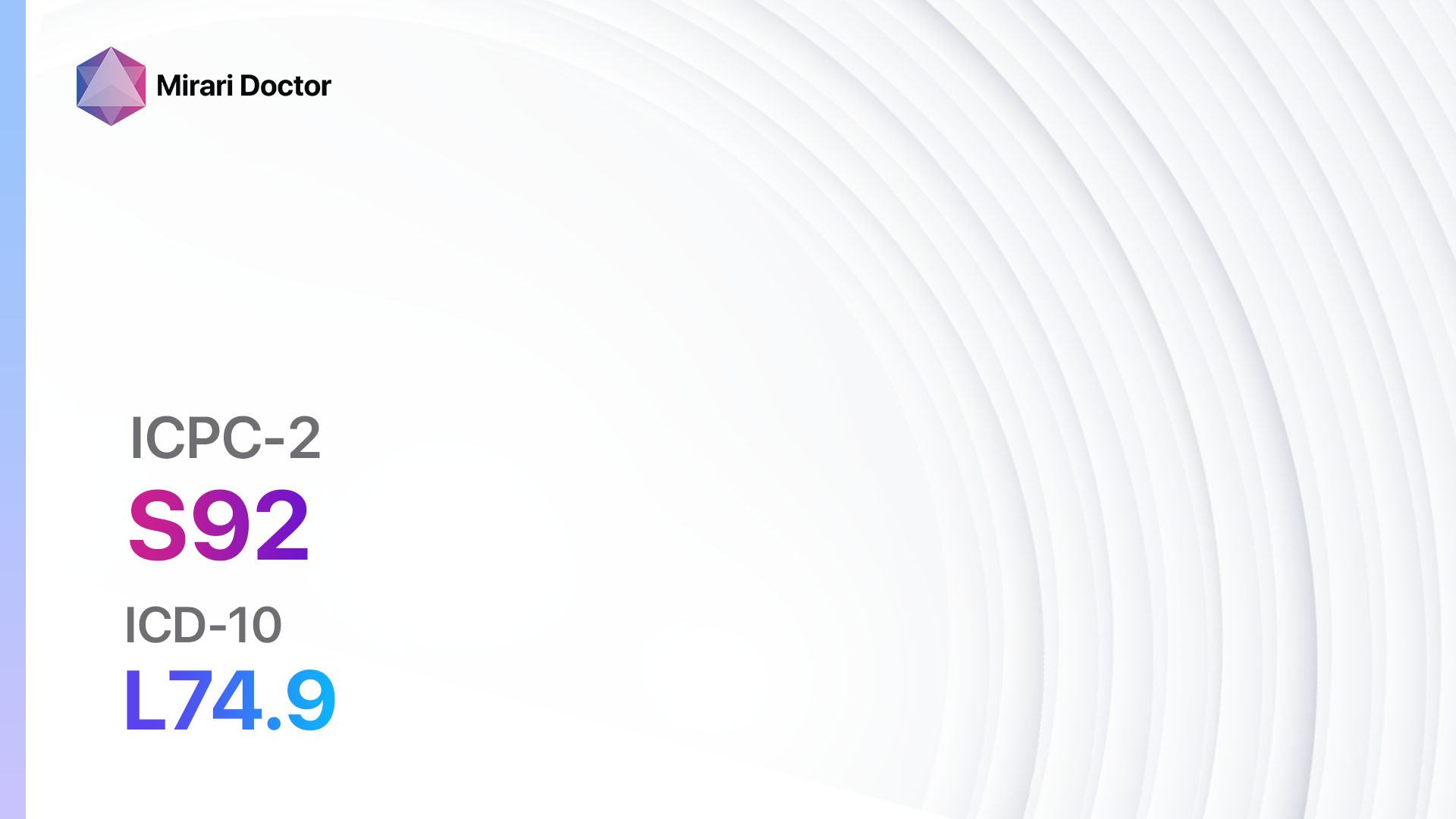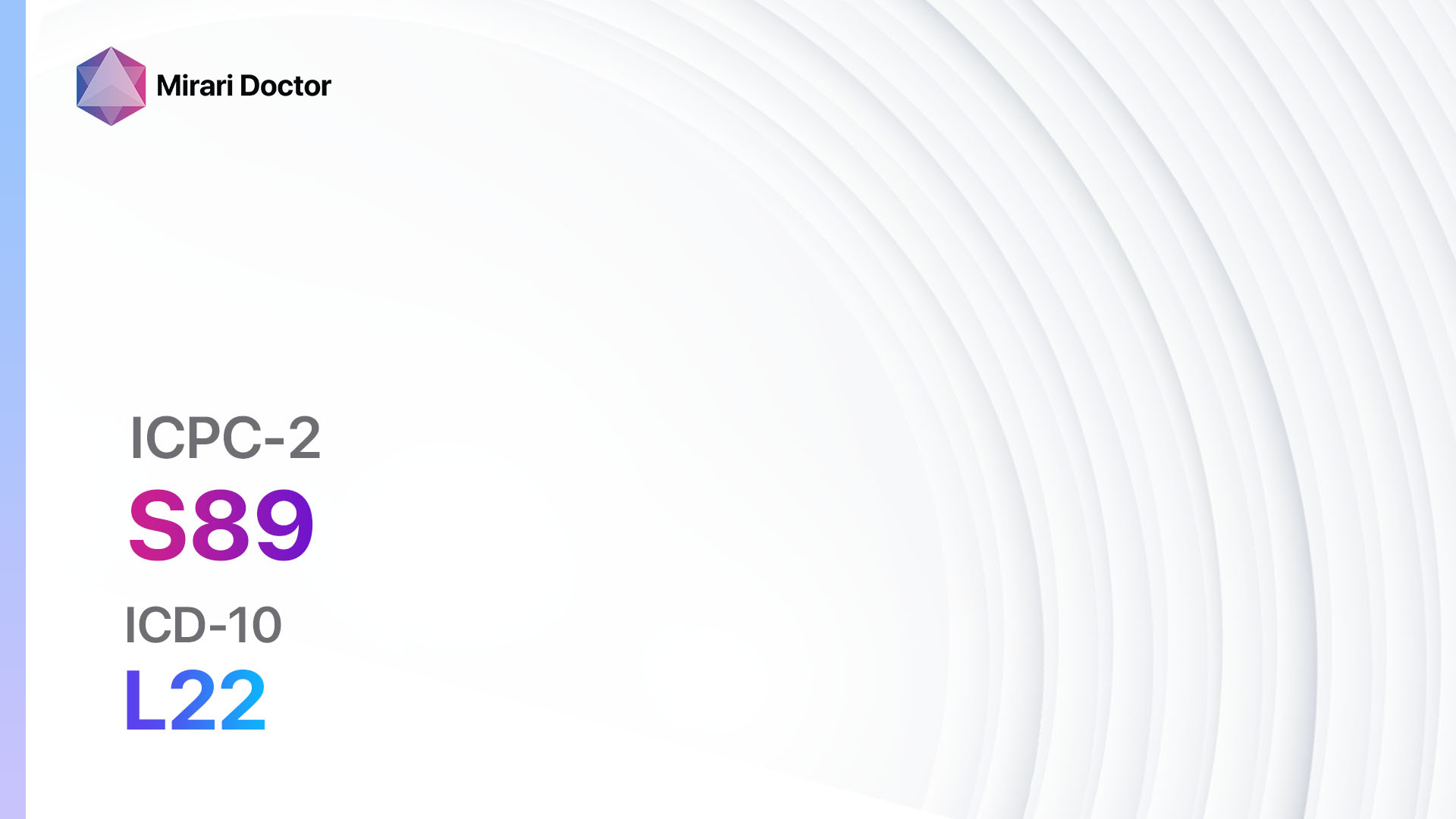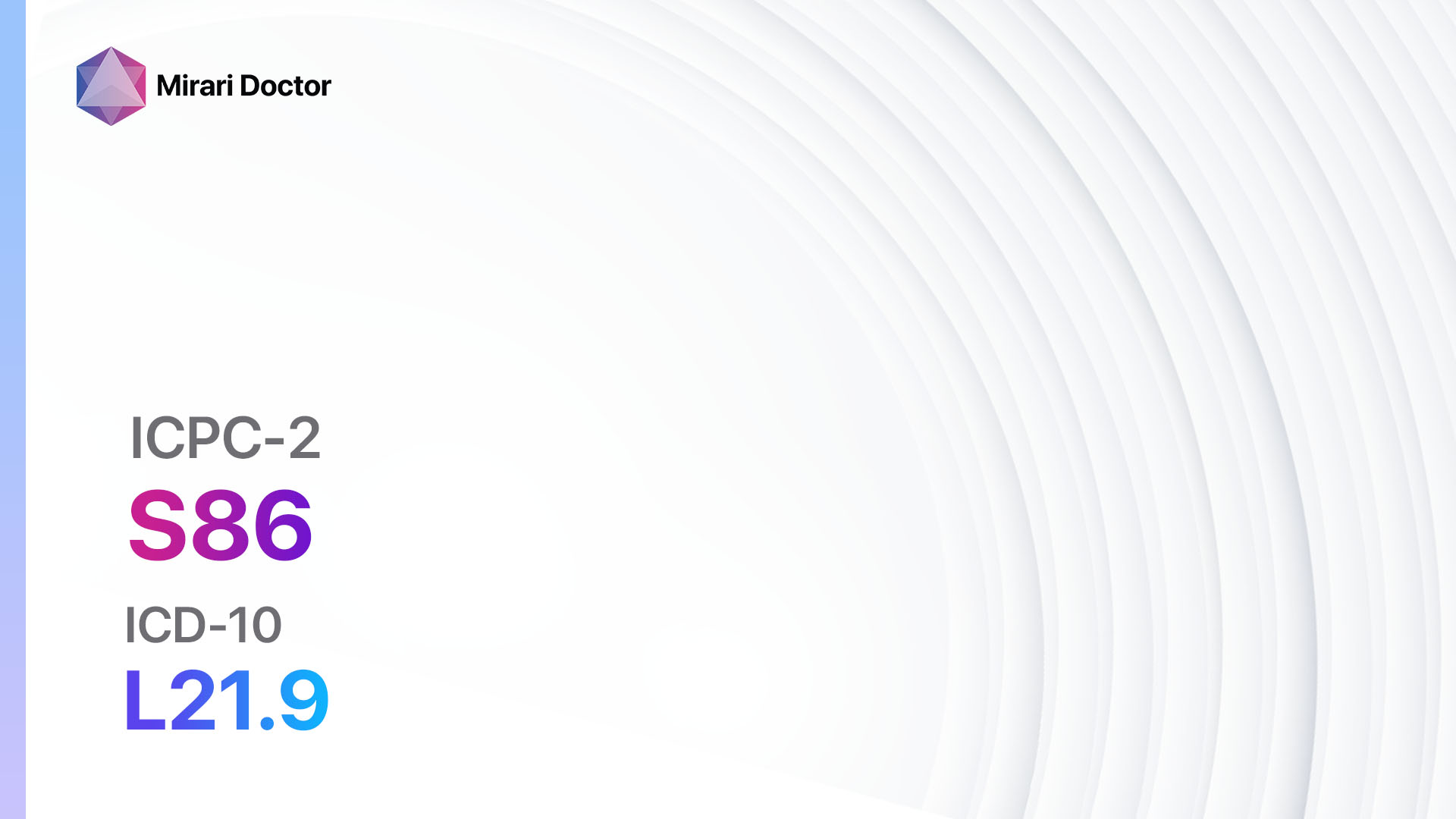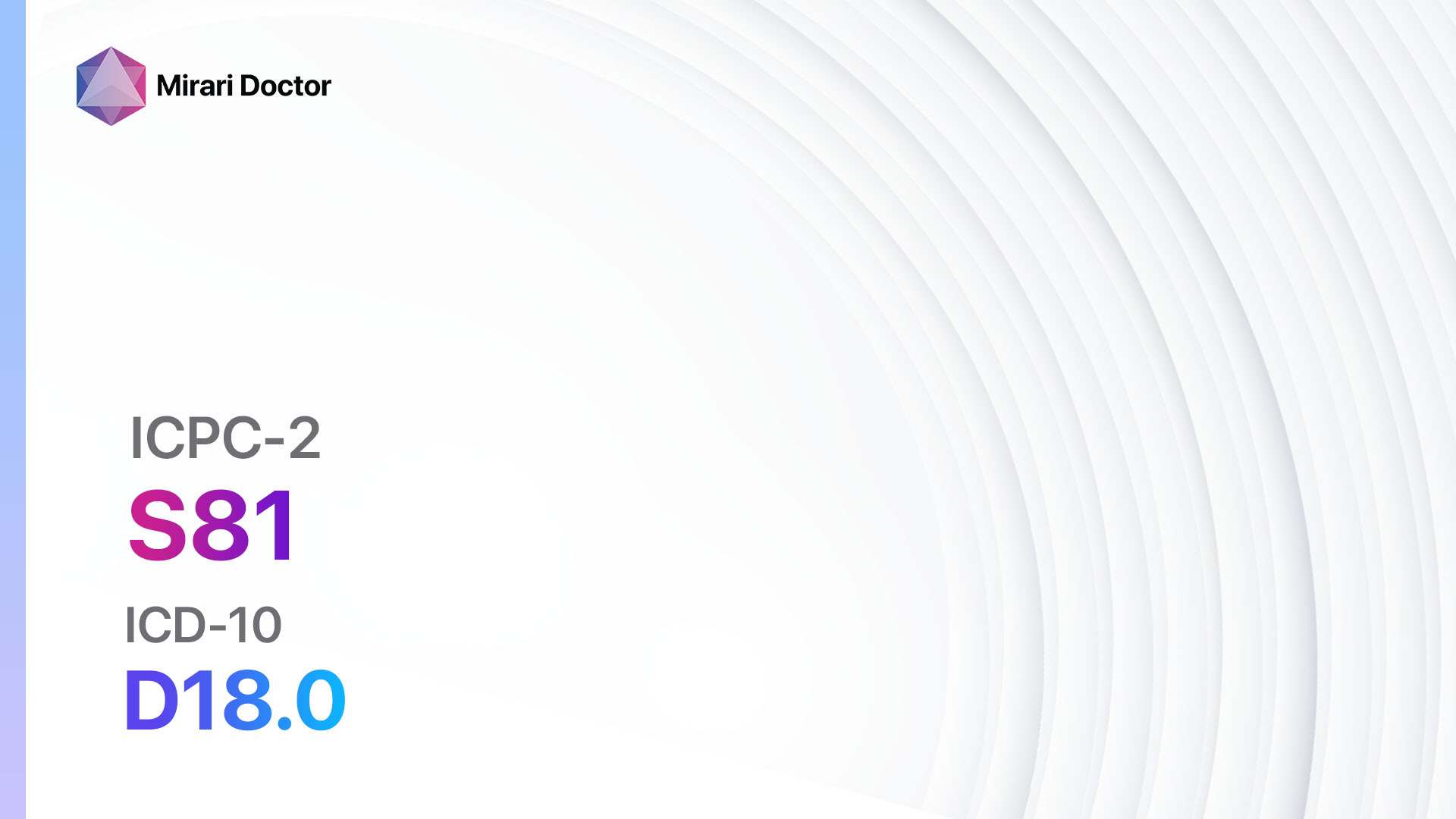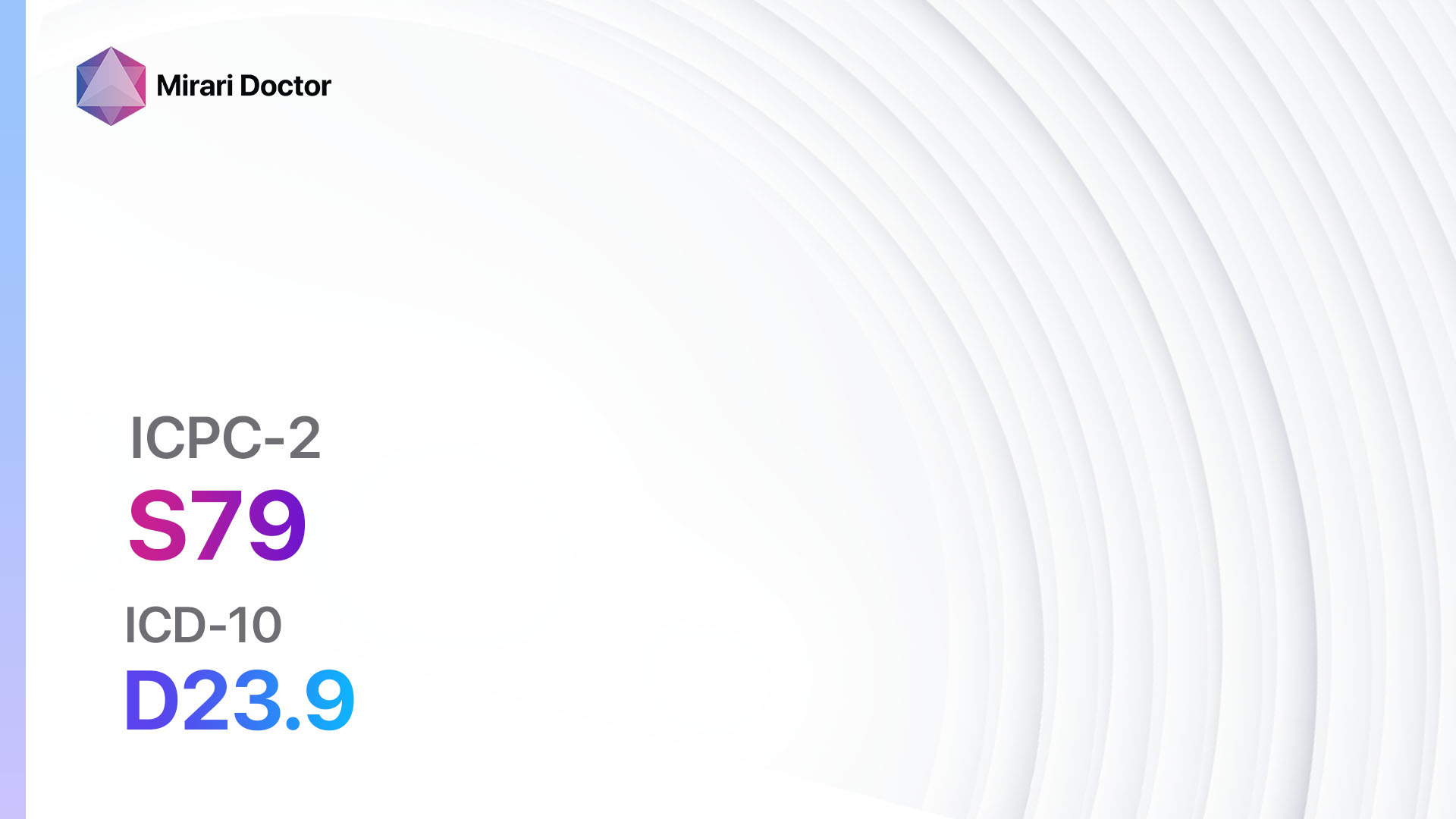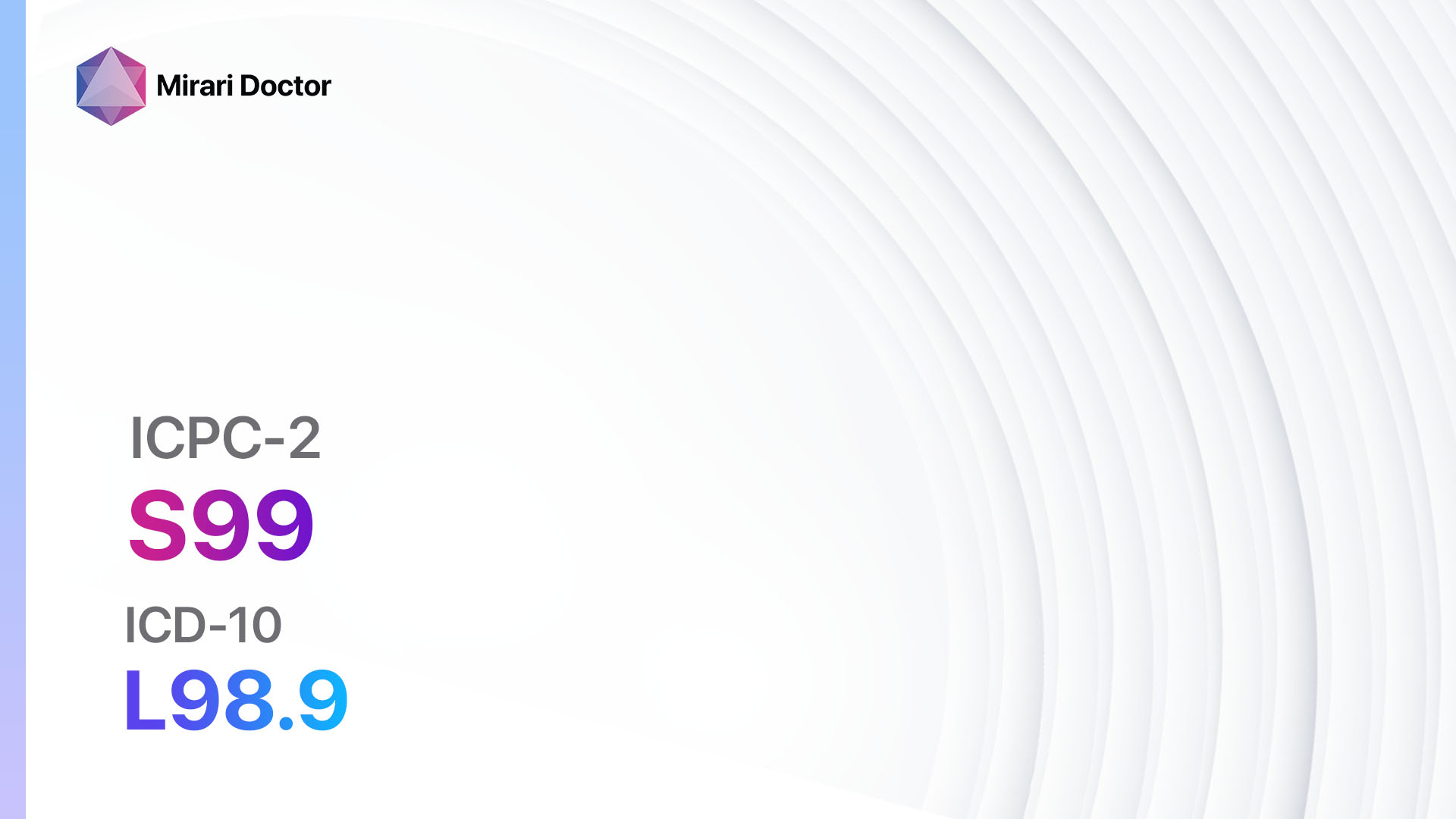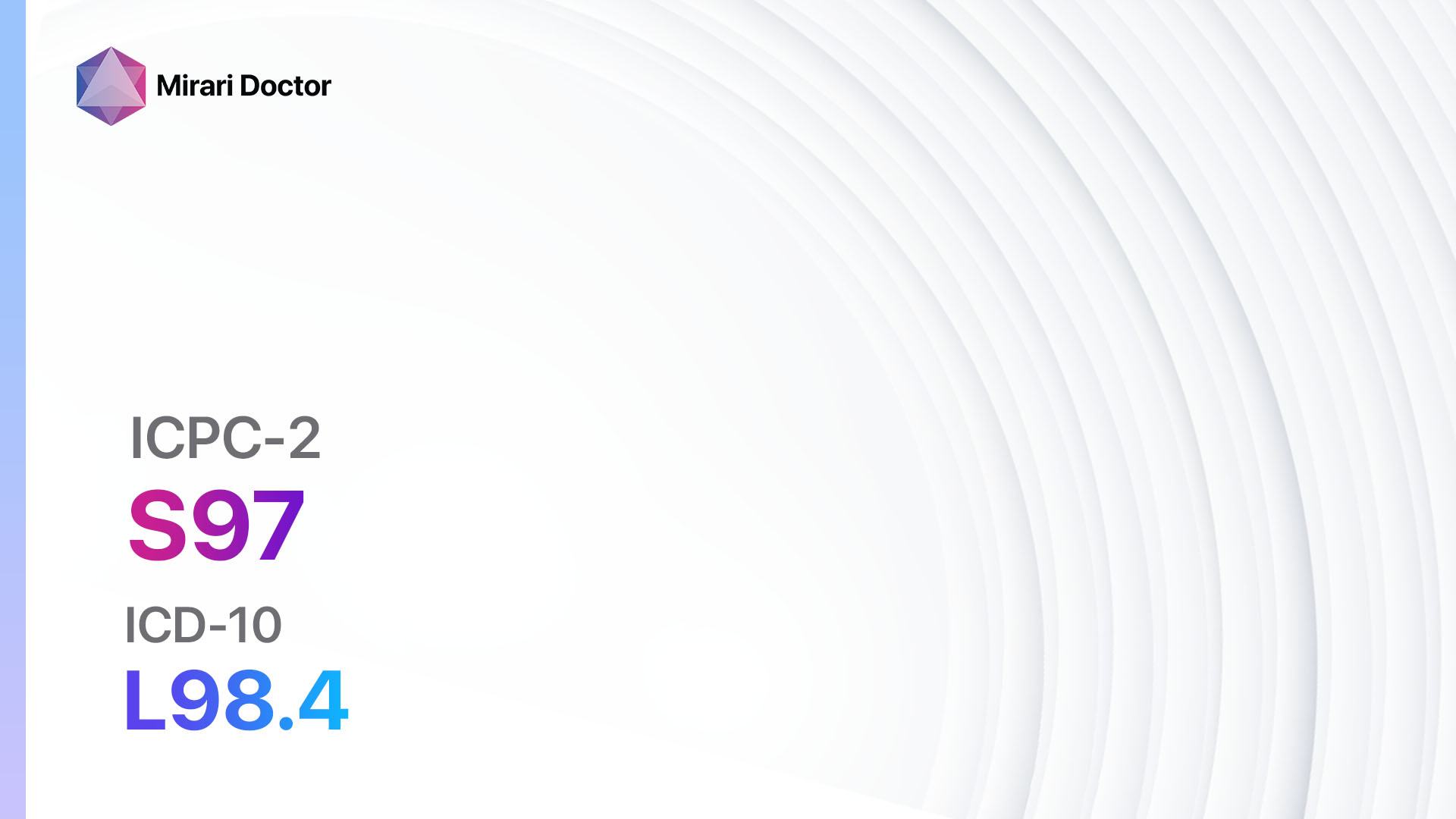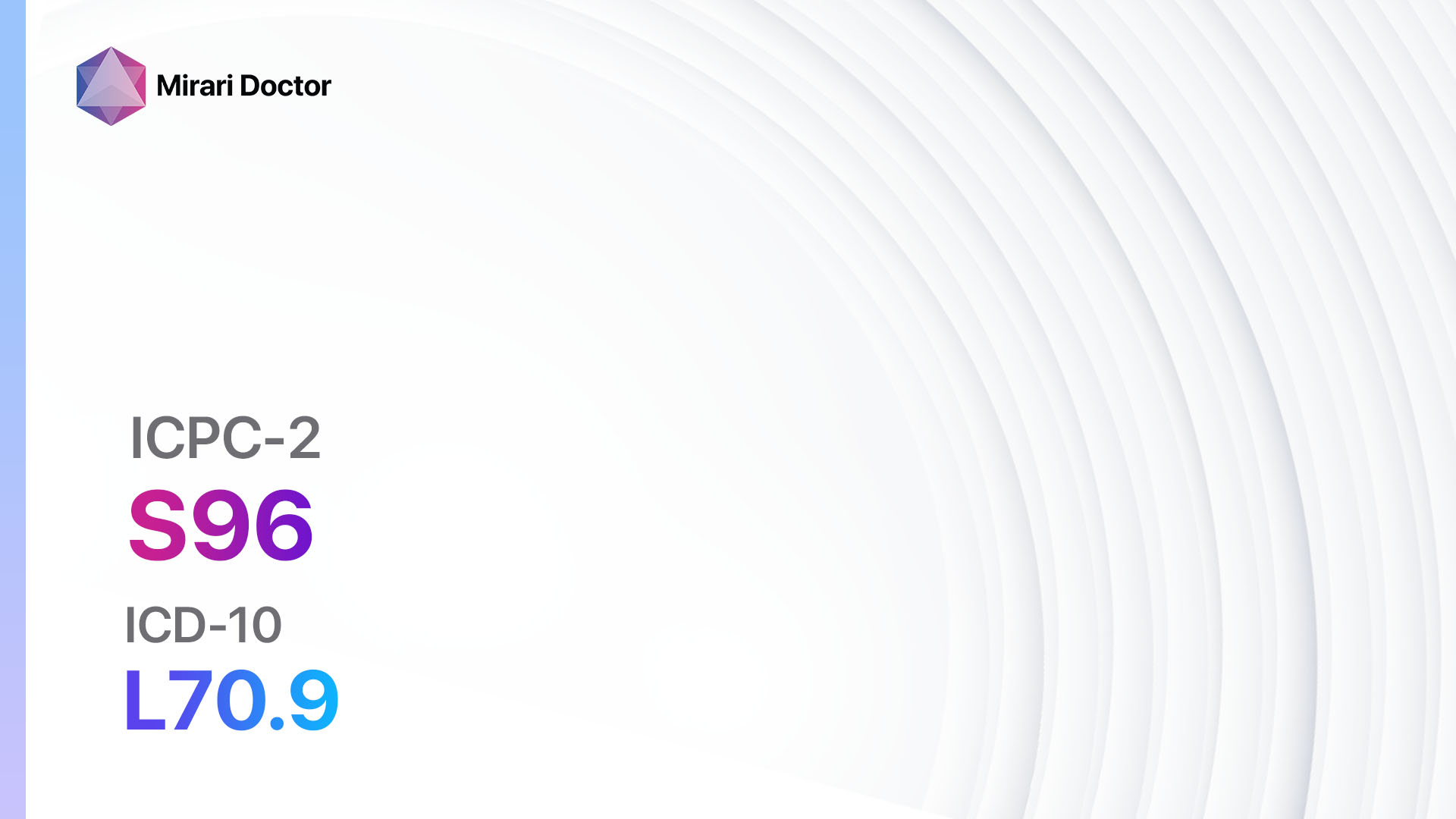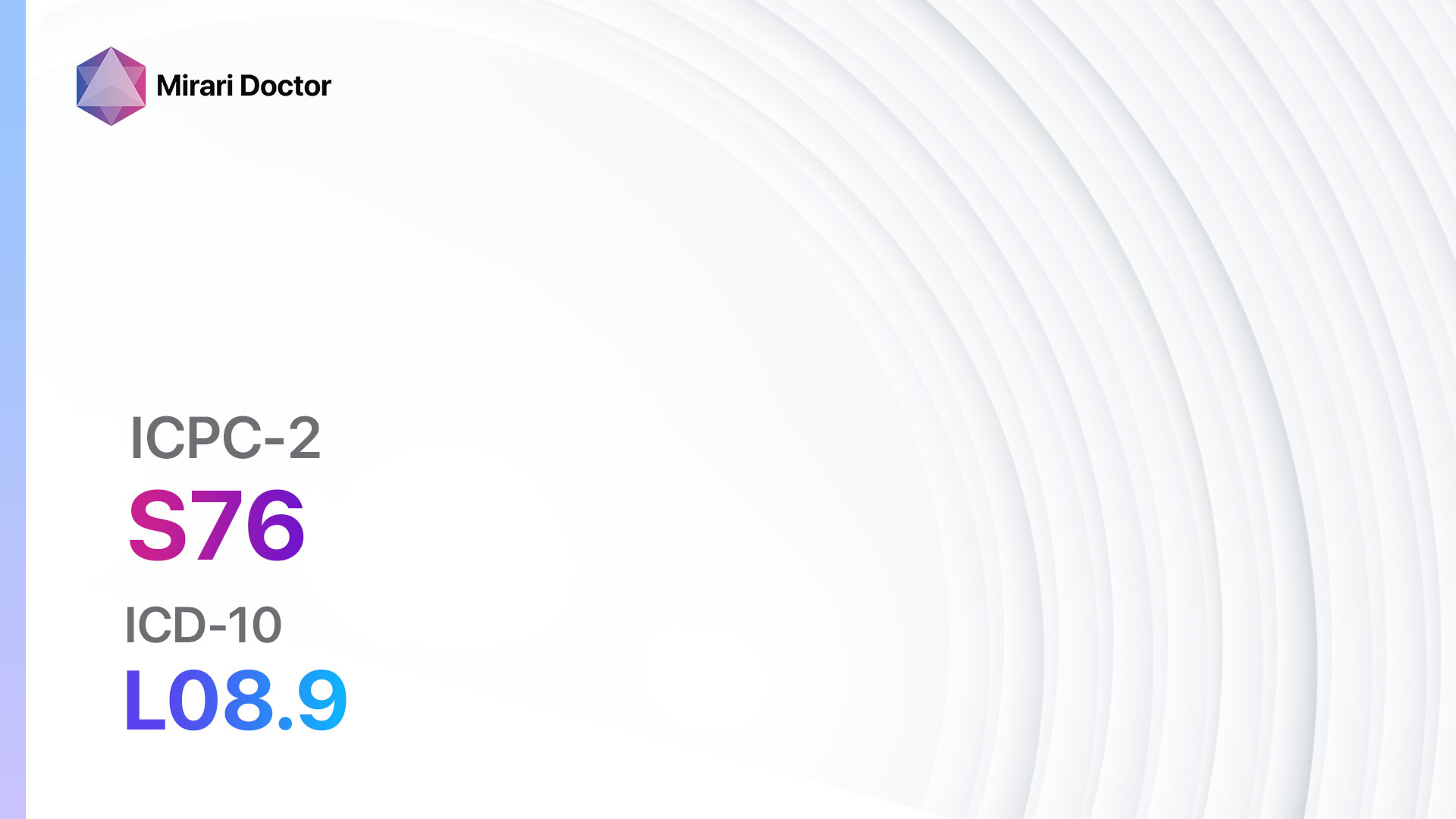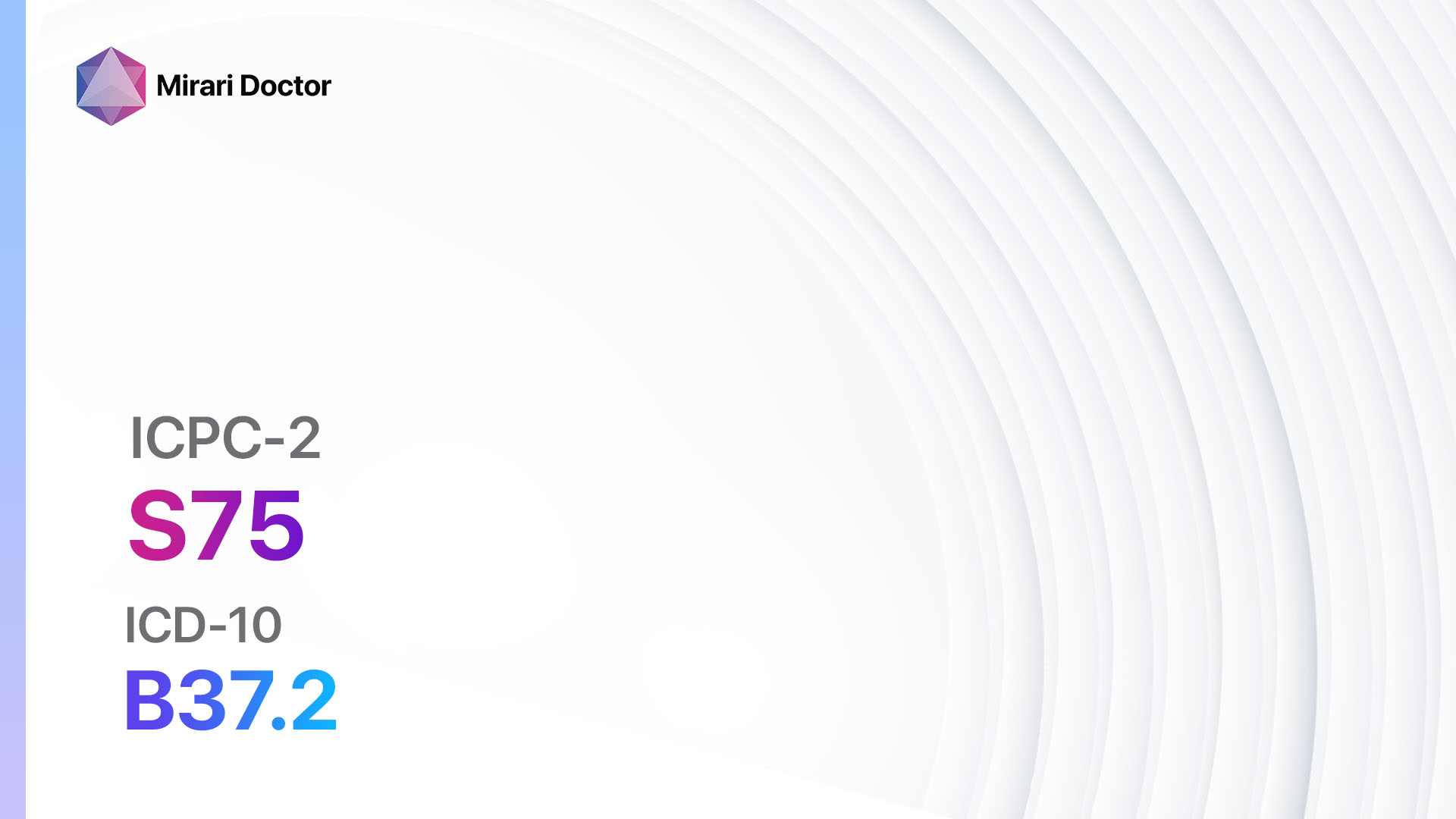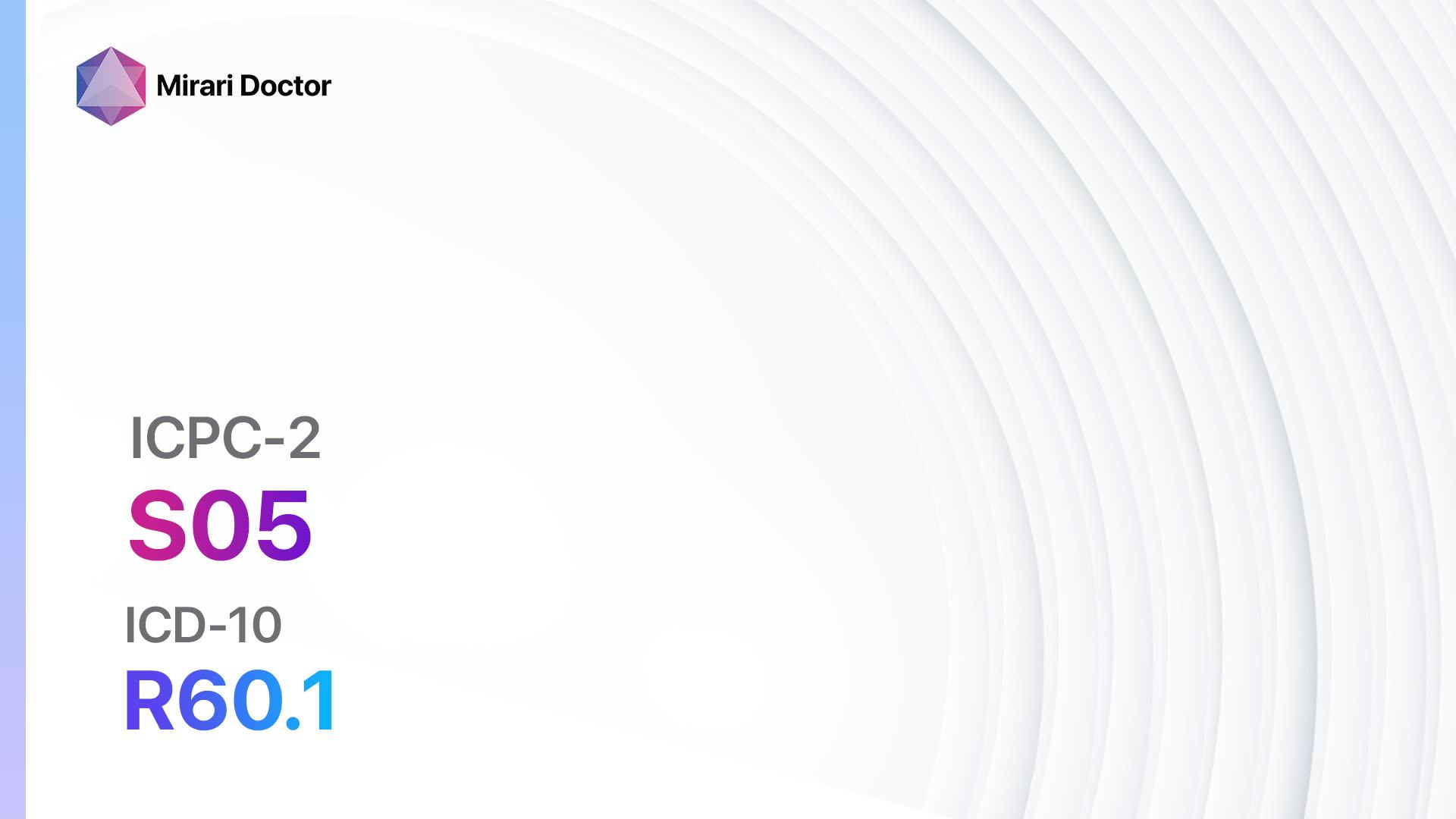
Introduction
Lumps or swellings that are generalized refer to the presence of abnormal growths or enlargements in various parts of the body. These lumps can occur in different tissues, such as the skin, subcutaneous tissue, muscles, or organs. Generalized lumps or swellings can be a sign of various underlying conditions, ranging from benign to malignant.[1] The aim of this guide is to provide a comprehensive overview of the diagnostic steps and possible interventions for lumps/swellings generalized.
Codes
- ICPC-2 Code: S05 Lumps/swellings generalized
- ICD-10 Code: R60.1 Generalized oedema[2]
Symptoms
- Visible or palpable lumps or swellings in different parts of the body
- Changes in the size, shape, or texture of the lumps
- Pain or tenderness in the affected area
- Redness or inflammation around the lumps
- Fever or other systemic symptoms in some cases[3]
Causes
- Inflammatory conditions, such as cellulitis or abscesses
- Benign tumors, such as lipomas or fibromas
- Malignant tumors, such as sarcomas or carcinomas
- Infections, such as lymphadenitis or cysts
- Systemic diseases, such as rheumatoid arthritis or lupus[4]
Diagnostic Steps
Medical History
- Gather information about the onset, duration, and progression of the lumps or swellings
- Ask about any associated symptoms, such as pain, fever, or changes in the skin
- Inquire about any relevant medical conditions, such as autoimmune diseases or previous malignancies
- Assess for any risk factors, such as exposure to toxins or family history of cancer[5]
Physical Examination
- Perform a thorough physical examination, including inspection and palpation of the lumps or swellings
- Note the location, size, consistency, and mobility of the lumps
- Assess for any signs of inflammation, such as redness or warmth
- Examine the surrounding tissues for any abnormalities, such as skin changes or lymphadenopathy[6]
Determine Severity
- Classify the lumps or swellings based on severity and depth, if applicable
- Categorize the lumps as superficial or deep, and assess for any signs of invasion or metastasis
- Determine the extent of involvement and the potential impact on organ function[7]
Laboratory Tests
- Complete blood count (CBC) to assess for any signs of infection or inflammation
- Erythrocyte sedimentation rate (ESR) or C-reactive protein (CRP) to evaluate the degree of inflammation
- Tumor markers, such as CA-125 or PSA, to screen for malignancies
- Biopsy or fine-needle aspiration (FNA) for histopathological examination of the lumps[8]
Diagnostic Imaging
- X-rays to visualize bony structures and assess for any abnormalities or fractures
- Ultrasound to evaluate the characteristics of the lumps, such as size, shape, and vascularity
- CT scans or MRIs to obtain detailed images of the lumps and surrounding tissues
- PET scans to detect any metabolic activity and assess for malignancies[9]
Other Tests
- Genetic testing to identify any underlying genetic mutations or predispositions
- Immunohistochemistry to determine the origin and nature of the lumps
- Flow cytometry to analyze the cell surface markers and identify specific cell types
- Cultures or serological tests to identify any infectious agents[10]
Follow-up and Patient Education
- Schedule regular follow-up appointments to monitor the progression of the lumps or swellings
- Educate the patient about the importance of self-examination and reporting any changes or new symptoms
- Provide information about support groups or resources for patients with similar conditions
- Discuss the potential treatment options and their associated risks and benefits
Possible Interventions
Traditional Interventions
Medications:
Top 5 drugs for generalized lumps/swellings:
- Nonsteroidal anti-inflammatory drugs (NSAIDs) (e.g., Ibuprofen, Naproxen):
- Cost: Generic versions can be $3-$20/month.
- Contraindications: Active peptic ulcer disease, history of gastrointestinal bleeding.
- Side effects: Upset stomach, heartburn, increased risk of bleeding.
- Severe side effects: Gastrointestinal perforation, renal failure.
- Drug interactions: Anticoagulants, corticosteroids.
- Warning: Prolonged use may increase the risk of cardiovascular events.
- Antibiotics (e.g., Amoxicillin, Cephalexin):
- Cost: Generic versions can be $5-$30/month.
- Contraindications: Allergy to penicillin or cephalosporins.
- Side effects: Upset stomach, diarrhea, allergic reactions.
- Severe side effects: Severe allergic reactions (anaphylaxis), Clostridium difficile infection.
- Drug interactions: Oral contraceptives, warfarin.
- Warning: Complete the full course of antibiotics as prescribed.
- Corticosteroids (e.g., Prednisone, Dexamethasone):
- Cost: Generic versions can be $4-$30/month.
- Contraindications: Active infections, systemic fungal infections.
- Side effects: Increased appetite, weight gain, mood changes.
- Severe side effects: Adrenal suppression, osteoporosis.
- Drug interactions: Nonsteroidal anti-inflammatory drugs (NSAIDs), anticoagulants.
- Warning: Taper the dose gradually to avoid adrenal insufficiency.
- Chemotherapy (e.g., Doxorubicin, Paclitaxel):
- Cost: Varies widely depending on the specific drugs and treatment regimen.
- Contraindications: Severe bone marrow suppression, active infections.
- Side effects: Nausea, vomiting, hair loss.
- Severe side effects: Bone marrow suppression, cardiotoxicity.
- Drug interactions: Many potential drug interactions, consult a pharmacist or oncologist.
- Warning: Close monitoring of blood counts and cardiac function is necessary.
- Immunosuppressants (e.g., Methotrexate, Cyclosporine):
- Cost: Generic versions can be $10-$100/month.
- Contraindications: Active infections, history of malignancies.
- Side effects: Increased risk of infections, liver toxicity.
- Severe side effects: Bone marrow suppression, nephrotoxicity.
- Drug interactions: Many potential drug interactions, consult a pharmacist or specialist.
- Warning: Regular monitoring of blood counts and liver function is required.
Alternative Drugs:
- Antihistamines (e.g., Loratadine, Cetirizine): Useful for managing allergic reactions or itching associated with lumps or swellings.
- Topical corticosteroids (e.g., Hydrocortisone cream): Can be applied to the skin to reduce inflammation and itching.
- Antifungal medications (e.g., Clotrimazole, Terbinafine): Used to treat fungal infections that may cause lumps or swellings.
- Antiviral medications (e.g., Acyclovir, Valacyclovir): Prescribed for viral infections, such as herpes, that may present as lumps or swellings.
- Immunomodulators (e.g., Tacrolimus, Pimecrolimus): Used for certain autoimmune conditions that may cause generalized lumps or swellings.
Surgical Procedures:
- Excisional biopsy: Surgical removal of the entire lump or swelling for histopathological examination.
- Incision and drainage: Surgical procedure to drain an abscess or collection of pus.
- Lymph node dissection: Surgical removal of lymph nodes for staging or treatment of malignancies.
- Tumor resection: Surgical removal of a tumor, either benign or malignant, with clear margins.
- Plastic or reconstructive surgery: Used to repair or reconstruct tissues after the removal of lumps or swellings.
Alternative Interventions
- Acupuncture: May help reduce pain and inflammation associated with lumps or swellings. Cost: $60-$120 per session.
- Herbal supplements: Some herbal remedies, such as turmeric or ginger, may have anti-inflammatory properties. Cost: Varies depending on the specific supplement.
- Homeopathic remedies: Certain homeopathic treatments, such as Arnica or Silicea, may be used to reduce swelling or promote healing. Cost: Varies depending on the specific remedy.
- Physical therapy: Can help improve mobility and reduce pain associated with lumps or swellings. Cost: $50-$150 per session.
- Mind-body techniques: Practices like meditation or yoga may help manage stress and improve overall well-being. Cost: Varies depending on the specific program or instructor.
Lifestyle Interventions
- Healthy diet: Emphasize a balanced diet rich in fruits, vegetables, whole grains, and lean proteins. Cost: Varies depending on individual food choices.
- Regular exercise: Engage in moderate-intensity exercise for at least 150 minutes per week. Cost: Free to low-cost options like walking or jogging.
- Stress management: Practice relaxation techniques, such as deep breathing or mindfulness, to reduce stress levels. Cost: Free to low-cost options like meditation apps or online resources.
- Smoking cessation: Quit smoking to reduce the risk of developing or worsening conditions associated with lumps or swellings. Cost: Varies depending on the chosen smoking cessation method.
- Weight management: Maintain a healthy weight to reduce the strain on the body and improve overall health. Cost: Varies depending on individual choices and preferences.
It is important to note that the cost ranges provided are approximate and may vary depending on the location and availability of the interventions. It is recommended to consult with healthcare professionals for personalized advice and treatment options based on individual circumstances.
Mirari Cold Plasma Alternative Intervention
Understanding Mirari Cold Plasma
- Safe and Non-Invasive Treatment: Mirari Cold Plasma is a safe and non-invasive treatment option for various skin conditions. It does not require incisions, minimizing the risk of scarring, bleeding, or tissue damage.
- Efficient Extraction of Foreign Bodies: Mirari Cold Plasma facilitates the removal of foreign bodies from the skin by degrading and dissociating organic matter, allowing easier access and extraction.
- Pain Reduction and Comfort: Mirari Cold Plasma has a local analgesic effect, providing pain relief during the treatment, making it more comfortable for the patient.
- Reduced Risk of Infection: Mirari Cold Plasma has antimicrobial properties, effectively killing bacteria and reducing the risk of infection.
- Accelerated Healing and Minimal Scarring: Mirari Cold Plasma stimulates wound healing and tissue regeneration, reducing healing time and minimizing the formation of scars.
Mirari Cold Plasma Prescription
Video instructions for using Mirari Cold Plasma Device – S05 Lumps/swellings generalized (ICD-10:R60.1)
| Mild | Moderate | Severe |
| Mode setting: 1 (Infection) Location: 0 (Localized) Morning: 15 minutes, Evening: 15 minutes |
Mode setting: 1 (Infection) Location: 0 (Localized) Morning: 30 minutes, Lunch: 30 minutes, Evening: 30 minutes |
Mode setting: 1 (Infection) Location: 0 (Localized) Morning: 30 minutes, Lunch: 30 minutes, Evening: 30 minutes |
| Mode setting: 2 (Wound Healing) Location: 0 (Localized) Morning: 15 minutes, Evening: 15 minutes |
Mode setting: 2 (Wound Healing) Location: 0 (Localized) Morning: 30 minutes, Lunch: 30 minutes, Evening: 30 minutes |
Mode setting: 2 (Wound Healing) Location: 0 (Localized) Morning: 30 minutes, Lunch: 30 minutes, Evening: 30 minutes |
| Mode setting: 7 (Immunotherapy) Location: 1 (Sacrum) Morning: 15 minutes, Evening: 15 minutes |
Mode setting: 7 (Immunotherapy) Location: 1 (Sacrum) Morning: 30 minutes, Lunch: 30 minutes, Evening: 30 minutes |
Mode setting: 7 (Immunotherapy) Location: 1 (Sacrum) Morning: 30 minutes, Lunch: 30 minutes, Evening: 30 minutes |
| Total Morning: 45 minutes approx. $7.50 USD, Evening: 45 minutes approx. $7.50 USD |
Total Morning: 90 minutes approx. $15 USD, Lunch: 90 minutes approx. $15 USD, Evening: 90 minutes approx. $15 USD |
Total Morning: 90 minutes approx. $15 USD, Lunch: 90 minutes approx. $15 USD, Evening: 90 minutes approx. $15 USD |
| Usual treatment for 7-60 days approx. $105 USD – $900 USD | Usual treatment for 6-8 weeks approx. $1,890 USD – $2,520 USD | Usual treatment for 3-6 months approx. $4,050 USD – $8,100 USD |
 |
|
Use the Mirari Cold Plasma device to treat Lumps/swellings generalized effectively.
WARNING: MIRARI COLD PLASMA IS DESIGNED FOR THE HUMAN BODY WITHOUT ANY ARTIFICIAL OR THIRD PARTY PRODUCTS. USE OF OTHER PRODUCTS IN COMBINATION WITH MIRARI COLD PLASMA MAY CAUSE UNPREDICTABLE EFFECTS, HARM OR INJURY. PLEASE CONSULT A MEDICAL PROFESSIONAL BEFORE COMBINING ANY OTHER PRODUCTS WITH USE OF MIRARI.
Step 1: Cleanse the Skin
- Start by cleaning the affected area of the skin with a gentle cleanser or mild soap and water. Gently pat the area dry with a clean towel.
Step 2: Prepare the Mirari Cold Plasma device
- Ensure that the Mirari Cold Plasma device is fully charged or has fresh batteries as per the manufacturer’s instructions. Make sure the device is clean and in good working condition.
- Switch on the Mirari device using the power button or by following the specific instructions provided with the device.
- Some Mirari devices may have adjustable settings for intensity or treatment duration. Follow the manufacturer’s instructions to select the appropriate settings based on your needs and the recommended guidelines.
Step 3: Apply the Device
- Place the Mirari device in direct contact with the affected area of the skin. Gently glide or hold the device over the skin surface, ensuring even coverage of the area experiencing.
- Slowly move the Mirari device in a circular motion or follow a specific pattern as indicated in the user manual. This helps ensure thorough treatment coverage.
Step 4: Monitor and Assess:
- Keep track of your progress and evaluate the effectiveness of the Mirari device in managing your Lumps/swellings generalized. If you have any concerns or notice any adverse reactions, consult with your health care professional.
Note
This guide is for informational purposes only and should not replace the advice of a medical professional. Always consult with your healthcare provider or a qualified medical professional for personal advice, diagnosis, or treatment. Do not solely rely on the information presented here for decisions about your health. Use of this information is at your own risk. The authors of this guide, nor any associated entities or platforms, are not responsible for any potential adverse effects or outcomes based on the content.
Mirari Cold Plasma System Disclaimer
- Purpose: The Mirari Cold Plasma System is a Class 2 medical device designed for use by trained healthcare professionals. It is registered for use in Thailand and Vietnam. It is not intended for use outside of these locations.
- Informational Use: The content and information provided with the device are for educational and informational purposes only. They are not a substitute for professional medical advice or care.
- Variable Outcomes: While the device is approved for specific uses, individual outcomes can differ. We do not assert or guarantee specific medical outcomes.
- Consultation: Prior to utilizing the device or making decisions based on its content, it is essential to consult with a Certified Mirari Tele-Therapist and your medical healthcare provider regarding specific protocols.
- Liability: By using this device, users are acknowledging and accepting all potential risks. Neither the manufacturer nor the distributor will be held accountable for any adverse reactions, injuries, or damages stemming from its use.
- Geographical Availability: This device has received approval for designated purposes by the Thai and Vietnam FDA. As of now, outside of Thailand and Vietnam, the Mirari Cold Plasma System is not available for purchase or use.
References
- Kumar V, Abbas AK, Aster JC. Robbins and Cotran Pathologic Basis of Disease. 9th ed. Philadelphia, PA: Elsevier Saunders; 2015.
- World Health Organization. International Statistical Classification of Diseases and Related Health Problems, 10th Revision (ICD-10). Geneva: WHO; 2019.
- Habif TP. Clinical Dermatology: A Color Guide to Diagnosis and Therapy. 6th ed. St. Louis, MO: Elsevier; 2016.
- Kasper DL, Fauci AS, Hauser SL, Longo DL, Jameson JL, Loscalzo J. Harrison’s Principles of Internal Medicine. 20th ed. New York, NY: McGraw-Hill Education; 2018.
- Bickley LS, Szilagyi PG, Hoffman RM. Bates’ Guide to Physical Examination and History Taking. 12th ed. Philadelphia, PA: Wolters Kluwer; 2017.
- Swartz MH. Textbook of Physical Diagnosis: History and Examination. 7th ed. Philadelphia, PA: Elsevier Saunders; 2014.
- Edge SB, Byrd DR, Carducci MA, Compton CC, Fritz AG, Greene FL. AJCC Cancer Staging Manual. 8th ed. New York, NY: Springer; 2017.
- McPherson RA, Pincus MR. Henry’s Clinical Diagnosis and Management by Laboratory Methods. 23rd ed. St. Louis, MO: Elsevier; 2017.
- Herring W. Learning Radiology: Recognizing the Basics. 4th ed. Philadelphia, PA: Elsevier; 2020.
- Jameson JL, Fauci AS, Kasper DL, Hauser SL, Longo DL, Loscalzo J. Harrison’s Principles of Internal Medicine. 20th ed. New York, NY: McGraw-Hill Education; 2018.
Related articles
Made in USA



